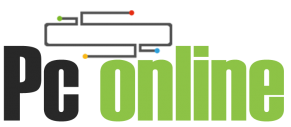To even start the auditing process, auditors are required to export the data stored in the computer (including sales receipts, supplies invoices, and more). This becomes much easier when you are using one of the advanced cloud-based accounting software Xero, or any other similar software (for accounting/bookkeeping).
In many cases, companies still use different types of software to store their data. So data conversion is required. This data must be converted from the stored software to the auditing software.
When entering data into the data processing system, auditors are required to verify the procedures are fully followed. The procedures ensures the accounting data is correctly fed into the processing system. The accounting journals, ledgers and worksheets must be reviewed. Compliance tests are then carried out to show whether such internal controls are working properly.
Auditors have to obtain evidence to verify the completeness, validity and accuracy of the record of a client records. This is an important determination factor of the opinion of the auditor. Substantive Tests are carried to examine the inventory of the company does in fact exist at the very end of the trading period.
The best practices
In short, the best practices in auditing should include the following:
- Completeness
- Validity
- Compliance
- Disclosure
To fulfill the main auditing objective, auditing procedures must possess completeness. Auditors make use of methods such as reconciliations, cutoff tests, audit trails, and more to verify if documents have been properly calculated and recorded. Reconciliation procedures tell you if accounts payable ledger transactions can match summary figures in the general ledger. Purchase and cash disbursements cutoff tests can make sure transactions for the fiscal year are included in the end-of-year financial statements of the business. Audit trails trace and match payments to recorded payables would look for open files that have unmatched documents.
The common way auditors establish legitimacy (or validity) is to reach out to vendors/suppliers with transaction confirmation requests. Auditors also reach out to some occasional business partners, usually from the records when they can see one or more open invoices.
Accounts payable audit
An accounts payable audit can be the main focus or a portion of a full internal audit. The primary focus of an accounts payable audit is to ensure the accounts payable is not understated and not overstated.
This process must make sure invoices, statements, and any other liabilities and accrued expenses have been properly calculated and recorded. The best practices include putting this data all in a cloud-based accounting/bookkeeping software. This will make sure any further accounting/bookkeeping work being handled much quicker and accurate.


